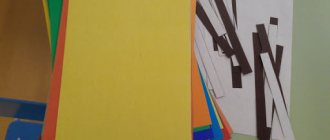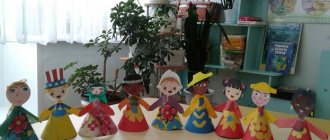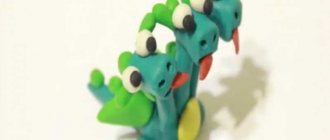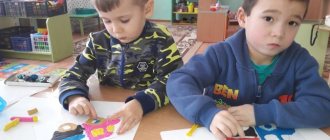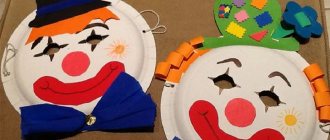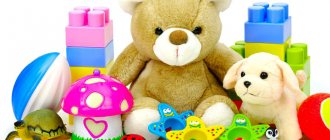Wooden toys
Scenes from the surrounding life became the theme for creating wooden crafts. In villages, children played with dolls made with an axe. With the advent of the plane and other woodworking tools, toys began to transform and improve.
Tumblers, which are now made of plastic, first appeared in the 19th century. Back then they were made of wood. They were painted to look like merchants, clowns, and funny fat women. Using a knife, two halves were cut out of linden, and a weight was attached inside the round blank. Both parts were glued together, painted, dried and varnished. This traditional Russian toy was the first toy in life for many generations of children.

Ancient folk traditions are being revived again. Russian art, dormant in grandmothers' chests, is becoming more popular every year. It evokes admiration among foreigners and pride among descendants. Now there are many sites on the Internet where master classes show and tell in detail how to make a folk craft yourself.
Clay crafts
In the old days, potters were revered people. They produced household utensils, dishes, and made toys from the remains of clay. Clay was mined near the village. Plastic fatty clay without impurities is located in the soil between layers of black soil and sand. It was soaked in a wooden trough, diluted with boiling water, mixed and placed on a small layer of ash.

Stir until smooth. The images surrounding them were created from the clay mass: domestic animals, peasant young ladies, birds and animals. Bear cubs with a barrel of honey became a symbol of goodness, birds brought happiness to the house, and horses represented a rich harvest.
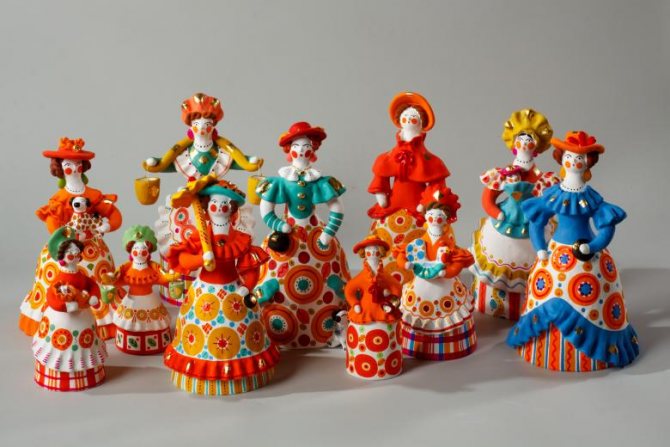
The figurines were fired in a Russian stove, where dry wood created coals with a temperature of 600 - 700 degrees.
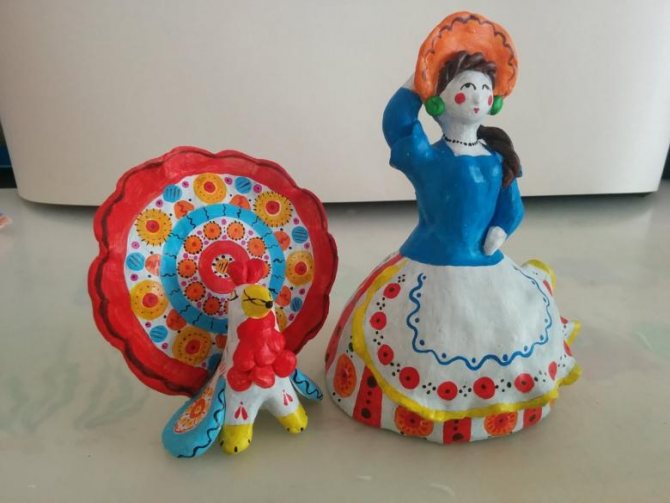
In the morning, the products were taken out of the cooled stove and dipped into a lime solution. After drying, they painted the crafts using natural means - paint from a decoction of onion peels, soot extracted from a chimney, and beet juice. Experienced craftsmen felt the clay and its structure. The hand and soul of the master was felt in every sculpted toy.
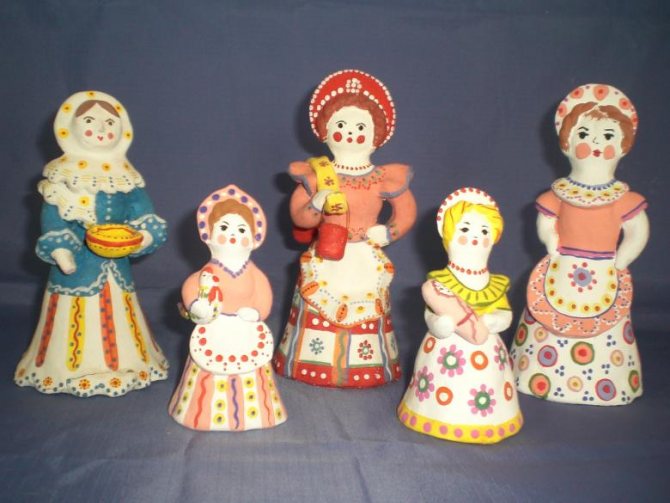
Headdress
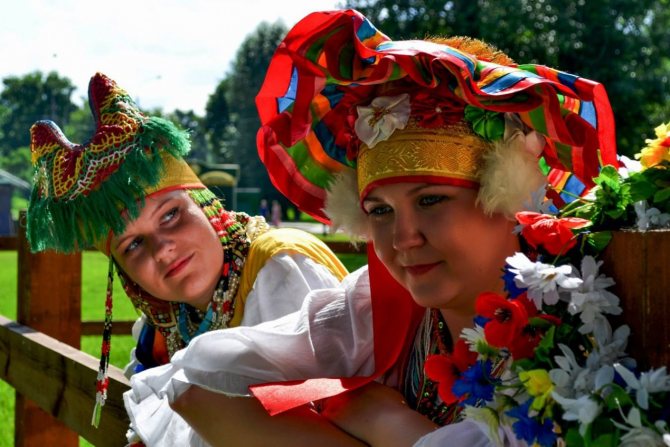
Costumes from the author's collection of artists Karelin
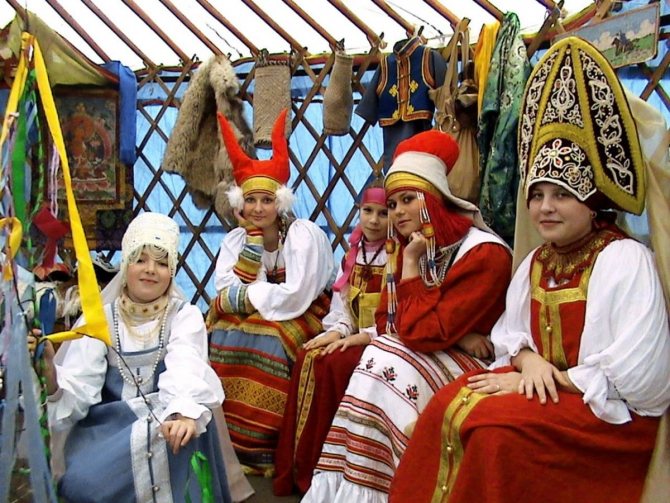
Costumes from the author's collection of artists Karelin
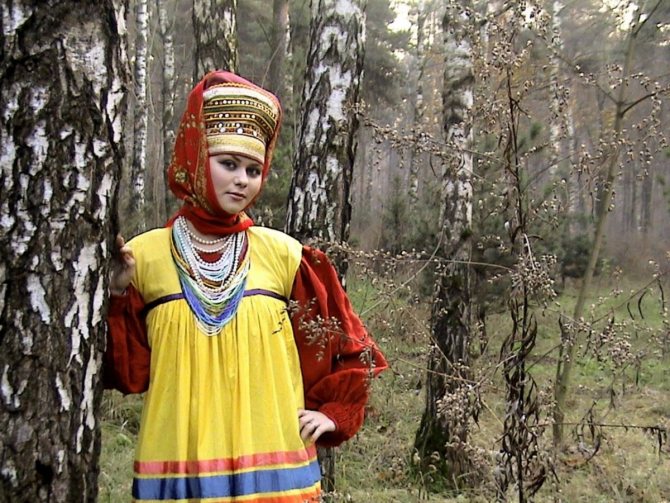
Costumes from the author's collection of artists Karelin
The headdress depended on age and marital status. He predetermined the entire composition of the costume. Girls' headdresses left part of their hair open and were quite simple: ribbons, headbands, hoops, openwork crowns, and folded scarves.
Married women were required to cover their entire hair with a headdress. After the wedding and the ceremony of “unbraiding the braid,” the girl wore a “young woman’s kitty.” According to ancient Russian custom, a scarf called ubrus was worn over the kichka. After the birth of the first child, they put on a horned kichka or a high spade-shaped headdress, a symbol of fertility and the ability to bear children.
Kokoshnik was the ceremonial headdress of a married woman. Married women wore a kichka and kokoshnik when they left the house, and at home they usually wore a povoinik (cap) and a scarf.
Straw masterpieces
Straw is the stems of cereals. The basis of the toy for peasant children was a bundle of straw, folded in half and tied with a rope. The fan-shaped straws resembled a sundress. These were the first straw creations.
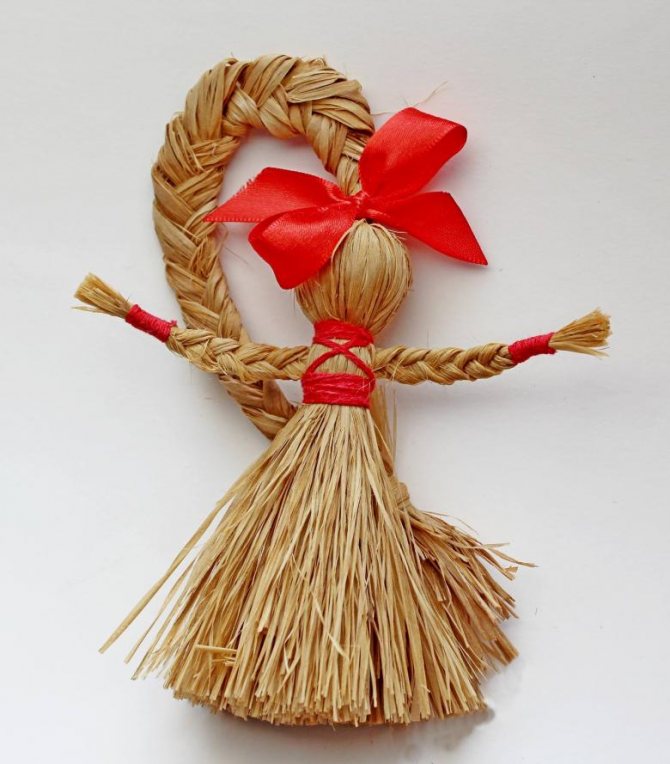
Over time, this type of creativity improved, and ideas arose for creating not only human images, but also all kinds of little animals, golden-maned horses, and deer.
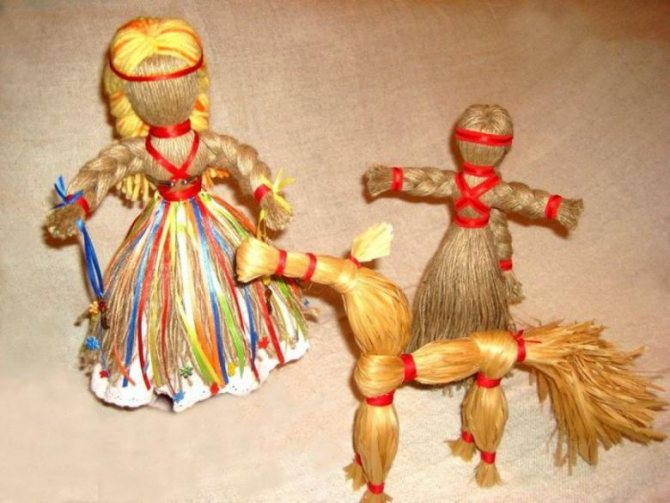
Skillful weaving and artistic taste, imagination and ingenuity of talented people led to the creation of wonderful plates, boxes, chests, hoops, bracelets and many other original souvenirs.
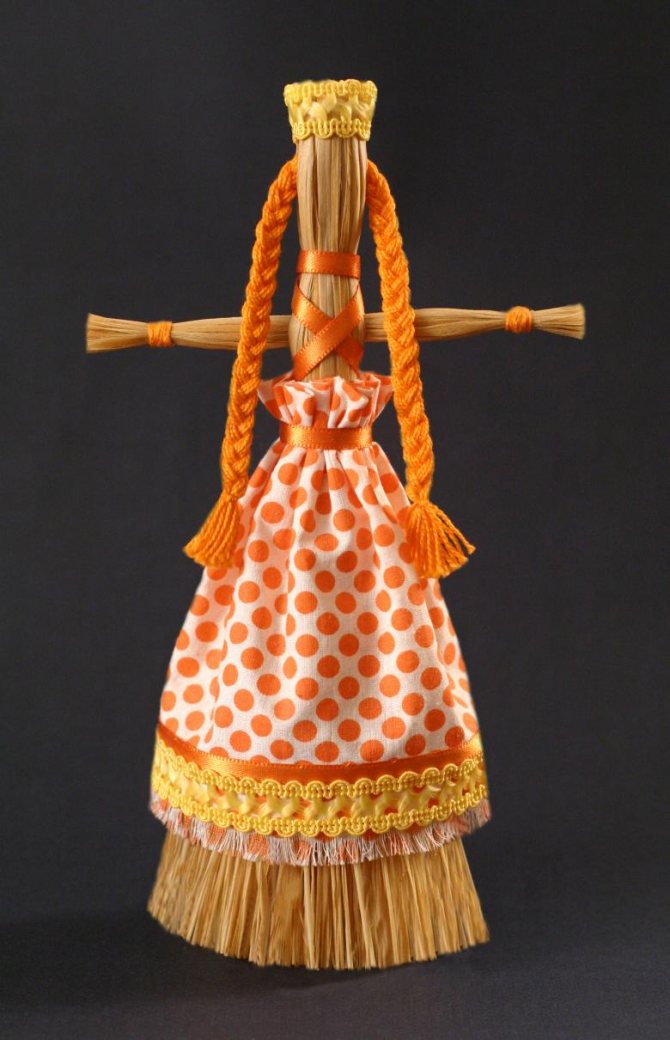
Crafts made from material saturated with the sun, nourished by mother earth and the warmth of human hands, create a certain style for a fashionable interior.
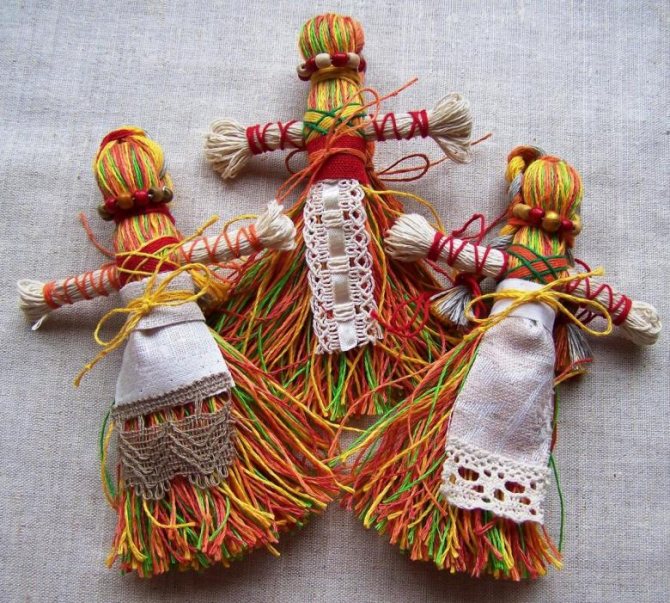
Class notes
| Author's full name | Title of the abstract |
| Klyuy A. | “Doll in national costume” Educational objectives : to introduce children to Russian folk costume, as well as costumes from other countries; consolidate the ability to depict a human figure. Developmental tasks : consolidate the ability to draw with watercolors, first marking the outline with a simple pencil. Educational objectives : to cultivate interest in the national clothes of Russia and other countries. Integration of educational areas : “Artistic creativity”, “Cognition”, “Communication”, “Socialization”, “Health”. Demonstration material: paper dolls in national costumes, a doll in a traditional Russian sundress and kokoshnik. Handouts: sheets of white paper according to the number of children, watercolor paints, sippy cups, brushes, coasters, napkins. Progress of the lesson: At the beginning of the lesson, the teacher informs the children that they live in the largest country. But besides it, there are many other countries in the world. And each has its own culture, traditions and national clothes. The teacher demonstrates paper dolls in national costumes and talks about each of them. The doll Katya comes to visit the children, dressed in Russian folk costume - an elegant silk sundress, belted with a narrow belt, and a kokoshnik. The sundress is embroidered with patterns, and the kokoshnik is decorated with gold embroidery, pearls and beads. The doll's hair is braided and decorated with a ribbon. The teacher invites the children to draw a Katya doll in her beautiful outfit. |
| Yuzhakova O.N. | “How the girl wore a red sundress” The lesson begins with the teacher and the children viewing an exhibition dedicated to Russian folk costume. To the accompaniment of quiet music, children listen to the teacher's story about the history of Russian dress. Pictures are shown depicting a shirt, a poneva (skirt), an apron, a shushun (outerwear for the cold season), a wreath, a headband, jewelry made of beads, amber, and pearls. The teacher dwells in more detail on such a piece of clothing as the Russian sundress. At first, only rich ladies wore it, and then Tsarina Catherine II allowed all classes to wear it - it became popular among peasant women and merchants' wives and daughters. An apron was usually put on top of the sundress, and a soul warmer was put on the shoulders. On their feet, peasants wore bast shoes, which were woven from bast or birch bark. By the way, in addition to them, people also wore leather shoes and felt boots in winter. The teacher also briefly talks about Russian folk clothing for men. A round dance game “Wreath” (to a Russian folk composition) is organized. Children are offered a game task - to weave a wreath from ribbons. Productive activity - the guys draw dolls Manya and Vanya, dressed in Russian costume. |
| Nikitina L. | "Doll in Russian national costume" At the beginning of the lesson, the teacher recites the lines of M. Shakhanov:
The song “I See Wonderful Freedom” plays. Conversation based on its content: what is the song about, what is the name of our native country, what is its size. The teacher asks the children who our ancestors are and from what sources we can learn about their lives. Children are invited to visit the museum - they are invited to the Fairy Tale Hall - they approach the stand with illustrations of Russian folk tales. The teacher pays attention to how the women in the pictures are dressed, where the clothes are casual and where they are festive. Physical education is conducted (accompanied by a musical composition).
Next, the children go to the Puppet Hall to look at their outfits and patterns. The teacher talks about the symbolism of flowers. From the magic chest the teacher takes out silhouettes of dolls in Russian costume. They gathered for the holiday, and the children’s task was to decorate sundresses and kokoshniks using geometric patterns. Children draw to Russian folk music. |
| Bublik L. | “Doll in national costume” (Chinese) During the lesson, children get acquainted with the friendly country of China, learn about its geographical location (large area, washed by several seas), culture, and look at the women's national costume. A Chinese doll comes to visit the children and greets them in Chinese. Her name is Jia, which means “beautiful” in Chinese. Preschoolers examine her national costume: trousers made of silk fabric, over which is worn a long wrap dress with wide sleeves (also made of silk). The Chinese outfit is embroidered with colorful patterns: flowers and butterflies, which have a symbolic meaning. Finger gymnastics “Friendship” is carried out:
Independent productive activity of children - to the accompaniment of Chinese music, they draw a Chinese doll in her national costume, and come up with their own pattern for fabric. |
Matryoshka applique
Younger preschoolers can make nesting dolls using the appliqué technique from prepared parts. Older children can make their own blanks using ready-made templates.
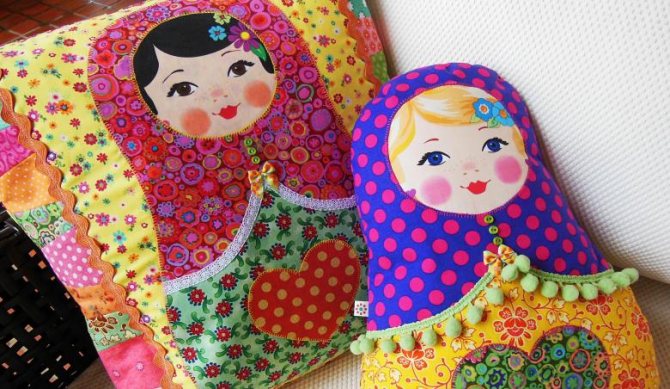
You will need simple tools:
- glue;
- scissors;
- pencil;
- markers.
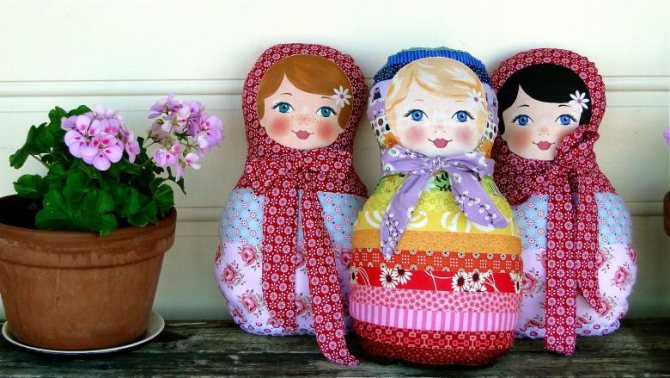
Materials for applique can be patterned fabric, felt, colored paper or candy wrappers. For the base, use cardboard or felt (if this is the main material of the application). Templates are drawn independently or taken from the Internet.
The main parts of the nesting doll: base, scarf, apron, face.
The base is cut out according to the template. A colored scarf is glued onto it. A circle of white paper is glued on top. A face is drawn on it. The apron part is glued below. It can be decorated with cut out circles from colored paper or candy wrappers.
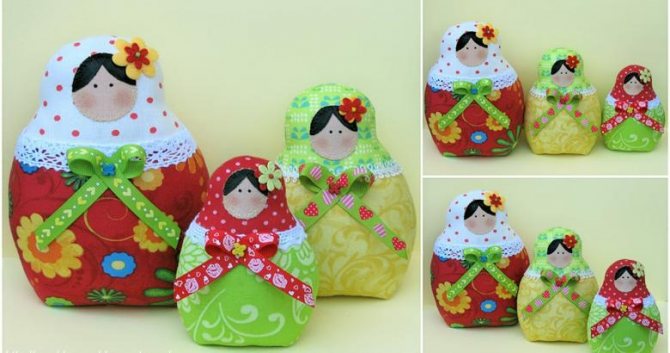
Amulet dolls
Rag dolls-amulets were popular folk crafts in Rus'. These are traditional Slavic crafts that have a certain symbolism. Each doll has its own purpose:
- “For good luck” is a female talisman
- “Family” is an assistant in creating a family and a guardian for an already created one.
- “Krupenichka” is a symbol of prosperity
- “Wisher” - an assistant in the implementation of plans
- “Herbalist” protects the house and creates comfort.
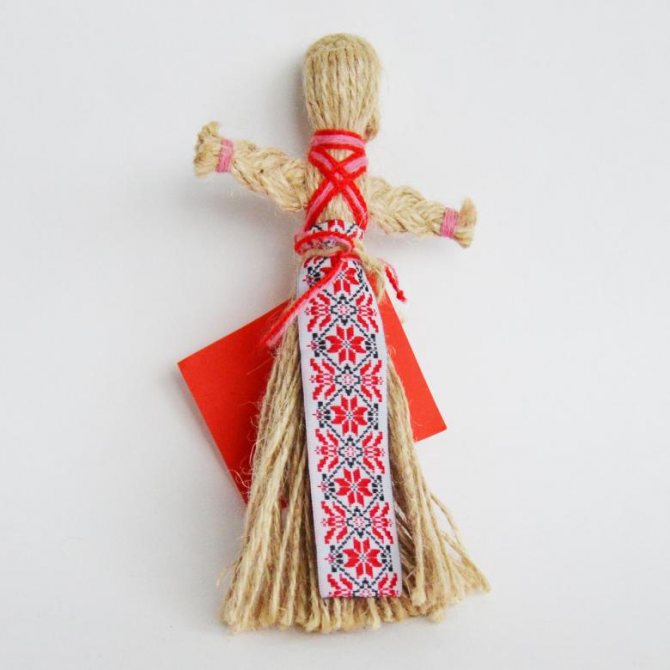
The names of the dolls are also known: “Vesnyanka”, “Uteshnitsa”, “Pelenashka” and others. The dolls were dressed up, but their faces were not depicted. According to beliefs, it was believed that a faceless, inanimate doll was inaccessible to the instillation of evil forces and evil spirits into it.
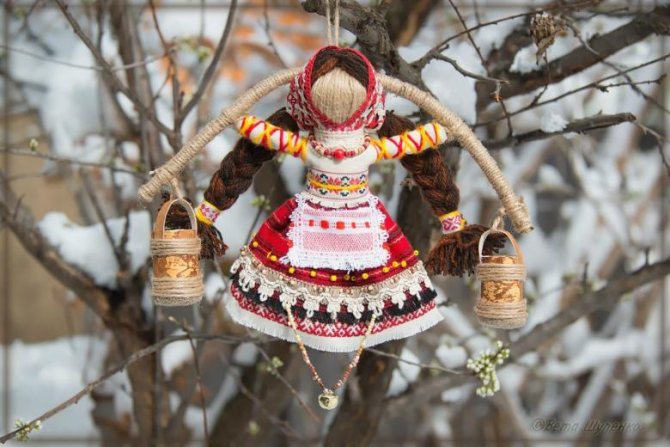
The craft was created from scraps of old clothes; they believed that worn things retain human warmth and themselves ward off misfortunes. The dolls had a simple design, but they always included the outline of a female figure and a long braid.
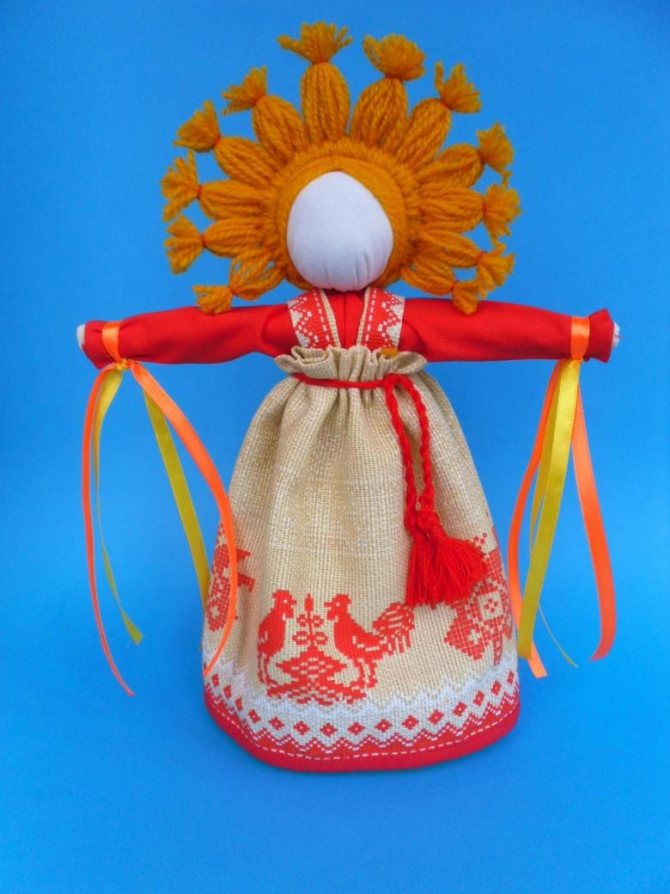
Rag dolls were an analogue of ritual figurines associated with wealth, fertility, peace and harmony in the home, and the veneration of motherhood. From an early age, the child realized the importance of the mother, her role in giving life.
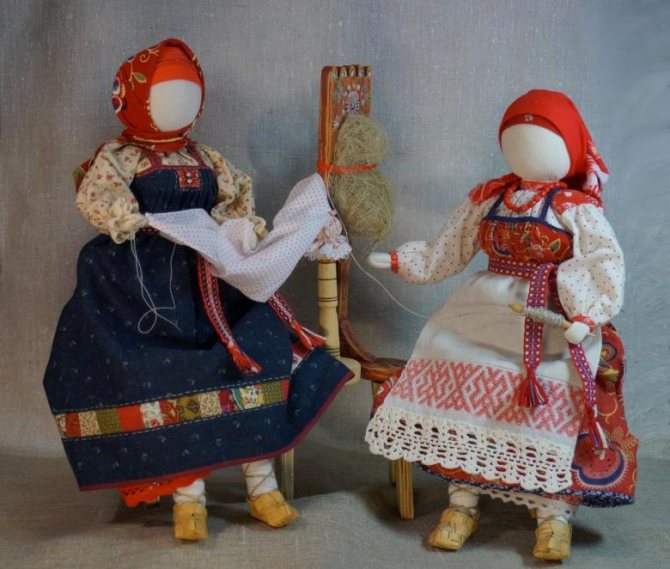
The toy's head was stuffed with millet, straw, and shreds. The dress, aprons and scarves were different in color. Clothes were decorated with lace and embroidery. The image of the doll reflected the character and occupation. Amulet toys brought good luck to the house, drove away illnesses, and comforted children. Now these cute souvenirs immerse you in the mysterious world of your ancestors and the uniqueness of their culture.

